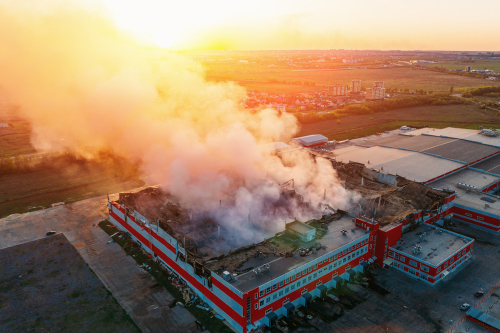As facility professionals, we pay close attention to newsworthy workplace disasters. Based on the scale and severity of these incidents, perhaps we assume they could not occur in our own organizations—after all, this is what we work to prevent. But the fact is, disasters can happen anywhere.
In 2019, there were multiple workplace disasters in the United States resulting in fatalities, serious injuries, and impact to the surrounding communities. Here are just a few:
- Beach Park, IL: 41 people including 11 first responders are injured and treated for varying degrees of injury after a farmer transports two tons of anhydrous ammonia on a public road in tanks with open valves.
- Dallas, TX: A crane collapses onto an apartment building during a storm with 71 mph wind gusts, killing a young woman, injuring five, and displacing more than 500 residents.
- Philadelphia, PA: Four employees are injured, a fire burns for hours, debris is thrown blocks away, and a community protests after a vat of butane ignites and causes multiple explosions at the Philadelphia Energy Solutions Refinery.
Analysis of these incidents and many others that occurred in 2019 identified several risk factors that were present in each—risk factors that are likely present in your own organization. Many of these companies had been previously cited and fined by regulatory bodies. They had suffered previous similar incidents. The incidents had the potential for impacting or did seriously impact the surrounding communities. Another identifiable trend was that the actions taken by the organizations prior to the incidents were technically legal and compliant but were not recognized as industry best practices. Management issues and multiemployer worksite concerns were present at many. Finally, emergency response frequently caused additional injuries.
Organizations can use these workplace disasters and the trends identified among them to determine if these risk factors are present in their own operations. Safety professionals can lead their teams in macro hazard analysis techniques and other risk assessment tools to identify the most likely top-level failures within your business and asses the effect on the surrounding community should the failure happen. We can review previous citations and incidents and rate them according to risk. We can conduct safety management system audits to look at our management gaps as well as “compliance plus” audits comparing our compliance with industry best practices. We can also conduct targeted audits based on emergency response to find our gaps.
Examining these workplace disasters and seeing the trends that were present can help you convince your organization’s leaders and associates that serious injuries, fatalities, and newsworthy disasters can occur in your organization—and convince them to take action to prevent them.
Free Webinar on Disaster Risk Factors
To learn more, join me for a free webinar on September 26th, “It Could Happen Here: 2019 Workplace Disasters and the Risks to Your Organization.” In this webinar, we’ll examine recent newsworthy disasters, discuss the commonalities that exist between them, and examine whether these risk factors are present your organization. We’ll discuss how to take a systematic approach to your workplace’s safety and mitigate your highest risks—you can then use this information to engage your leadership and boost the preparedness of your organization.
| Camille Oakes, CSP, SMS, Meng, is President of Better Safety LLC. |

